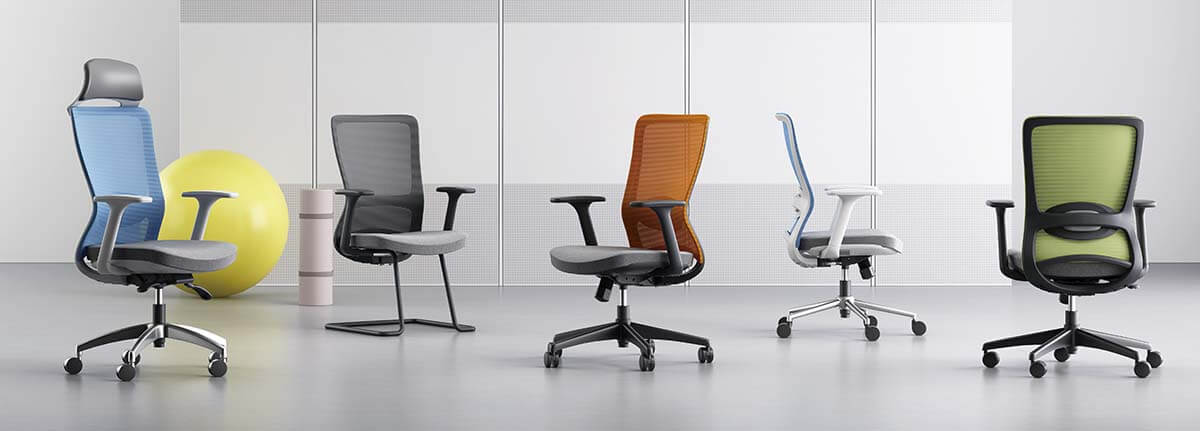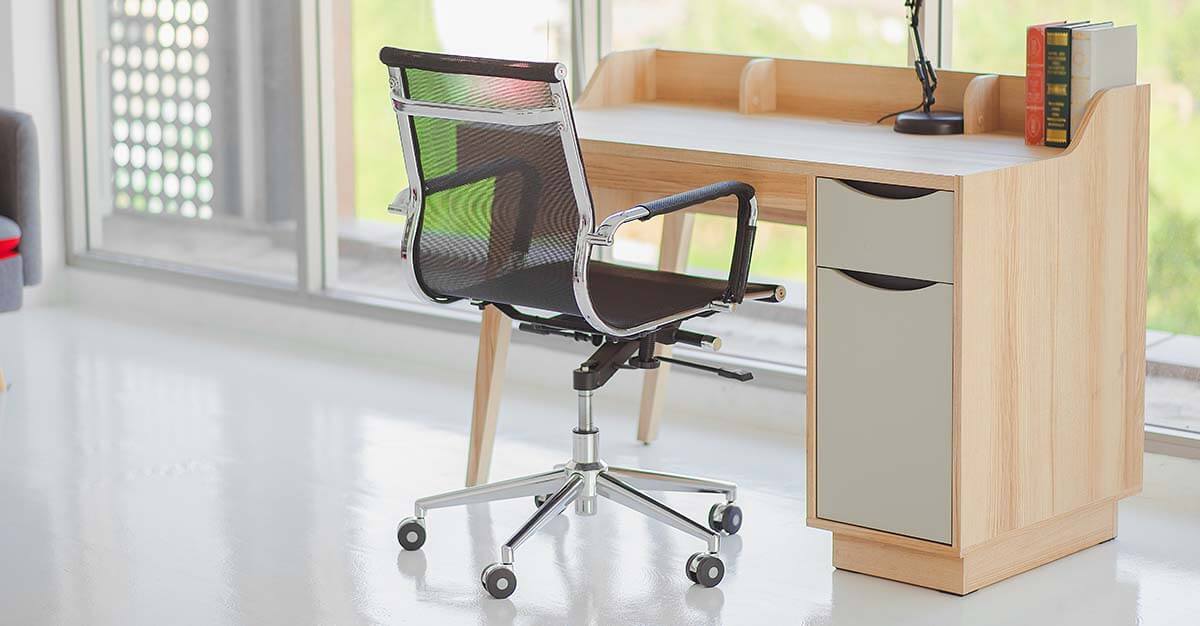
We collect basic website visitor information on this website and store it in cookies. We also utilize Google Analytics to track page view information to assist us in improving our website.

In the last couple years, healthcare burnout has become a hot topic, especially for those in the profession. Mental health in radiology has become a well-researched topic because of the recognition of work-life balance issues.
Burnout refers to a constellation of symptoms, such as loss of enthusiasm for work, emotional exhaustion, high depersonalization, and loss of a sense of personal accomplishment.
Burnout is a global health issue impacting physicians in all medical specialties, whether they work in hospital settings or variable work environments.
Burnout research shows that not just physicians but also radiology staff are at a high risk. And this trend has increased in recent years. High levels of burnout affect patient care and can cause medical errors.
The radiology workflow has changed substantially in the last 20 years because of the picture archiving and communications system (PACS), which produces larger data sets, increasing workflow.
Current diagnostic imaging environments aren’t always designed following ergonomic principles of comfort and workflow. This lack of thought can also contribute to increasing levels of radiologist burnout. More and more, incorporating ergonomics in radiology is a trend that’s catching on to increase workforce well-being.
Research has also shown that poor communication can sometimes drive job dissatisfaction. Perceived lack of appreciation and recognition for one’s work, lack of input and involvement in the decision-making process, lack of support, and lack of transparency could lead to discontent and potentially increase burnout symptoms.
Owing to the nature of their work, radiologists are prone to RSIs that lead to significant pain or a reduction in quality of life. RSIs are frequently experienced in the neck, shoulder, back, and wrists, but are not limited to these areas. Injury cases have increased after the introduction of PACS workstations, because imaging professionals now spend long hours in front of computers.

Burnout impacts radiologist's psychological and physical well-being, which produces a ripple effect on patients’ healthcare journeys. Burnout causes mistakes and decreases output. Mistakes in radiology can lead to misdiagnoses and cost factors for institutions. Burnout can lead to people missing work or change careers.
Burnout can also lead to loss in productivity, a decrease in professionalism, high radiology staff turnover, or even early retirement. In worst-case scenarios, and if not addressed adequately through burnout prevention strategies, it can also result in radiologist suicide.
Burnout must be remedied both by radiology experts themselves and their employers. But instead of fixing burnout after it happens, the focus must shift to incorporating stress reduction techniques into continuing education and professional development. Making it part of the workplace culture makes it easier to improve workload management and positive teamwork in radiology.
Having a proactive approach to tackling burnout also increases employee engagement. Reduction in burnout leads to increase in job satisfaction and produces reliable results for patients.
Working long hours, staring at diagnostic images, leads to enormous fatigue that can accumulate over time. Reducing fatigue is more about just giving perks to hard-working radiologists and imaging experts.
Correct, medical-grade displays help radiologists work faster, making fewer mistakes. A proper ergonomic workstation can prevent muscle strain, RSIs, and discomfort that distracts from full focus.
Further, when radiologists are given more control over their working conditions and schedules, they work longer in the profession with a greater degree of job satisfaction.
The fight against radiologist burnout begins with an increase in awareness of the importance of the quality of radiology technology used. Design tools that follow ergonomic health principles, allowing for regular breaks to reduce eye strain, are important to improving the work and accuracy of radiologists. That’s the endgame every medical and imaging facility should strive for.
Advancements in technology are moving at a fast pace these days, so why not use it to assist in decreasing burnout for radiologists? Computer assisted detection (CAD), as well as high-resolution image analysis tools can help highlight inconsistencies in radiologic images so doctors can focus on identifying and diagnosing the problem.
Automation of certain repetitive and monotonous clinical tasks can also help take the burden off the radiologist. Adopting easy-to-use radiology solutions can minimize burnout among staff, decreasing stress and fatigue when they’re trying to study and use complex solutions.

If you’re setting out to prevent burnout for your radiologists, you must look for improvements in four domains: physical, emotional/spiritual, social and time off.
Radiologists should be encouraged to create an emotional and spiritual balance. They can use journaling to note activities or thoughts that lead to a sense of well-being and accomplishment. Frequent self-assessment, acknowledging feelings of gratitude, and healthy spiritual practices may help to achieving optimum emotional and spiritual wellbeing
The physical aspect includes optimization of overall health and appropriate physical activities. Taking frequent breaks during the workday and making most of the break by introducing light exercise is important. But once the workday is over, getting enough sleep, proper nutrition, participating in productive activities, and spending quality time with friends and family are useful strategies to combat burnout.
Mindfulness is a common positive psychology technique that can be used for preventing burnout. It is a coping mechanism for stress reduction that has been extensively studied. Start with adopting deep breathing techniques into your daily routine and graduate up to guided meditation to release tension during the workday.
In some cases, radiologists experiencing issues with burnout may need help from mental health professionals. But like any other person, radiologists can be hesitant in seeking help from mental health professionals due to stigma associated with it. Innovative ways, such as team development exercises and support groups for staff, can help reduce the stigma associated with seeking therapy.
Burnout, if unchecked, can become a problem that affects and involves the entire healthcare system and not just the individual going through it. Keeping that in mind, organizations and employers sometimes have to step in to provide safe spaces and interventions for their employees and teams. Studies have shown that the impact is greater when burnout is addressed in a collaborative way.
Organizations can promote radiologist well-being by beginning with an acknowledgement of the issue. The next step is to assess the problem and the extent to which it is affecting each team member.
Organization-directed interventions should combine elements, such as structural changes to the workflow, encouraging open communication between healthcare leadership and radiologists and physicians, and cultivating a sense of teamwork and job control.
Another step that can be taken at an organizational level is employing more staff to share workload appropriately, offering greater job flexibility, and allowing for more work-life balance.
The workload can also be shared by adding more part-time radiologists if full-time workforce increase isn’t on the cards. That way, the regular roster of radiologists doesn’t have to put in weekend and overnight shifts. Additional staff can also pick up the slack during busy periods or even provide overlapping coverage to alleviate the workload.
Another approach is to allow radiologists to determine their own schedule. That means they may choose to work longer hours on certain days of the week and shorter hours on other days. As long as they’re in charge of their own workflow and workload, they can meet professional responsibilities without having to sacrifice their personal health.
Reducing the isolation of the radiologist inside and outside of the reading room is another way to help prevent burnout. Fostering a culture of collegiality among radiologists and administrative staff in the work environment is a way to accomplish this.
Team huddles are increasingly being seen as a means not only to improve quality and workflow but to increase communication and cooperation between and within teams.
Specific approaches include eating lunch together or providing small tokens of encouragement at the workplace (e.g., celebrating holidays and staff birthdays and distributing certificates/rewards/gift cards for meeting certain metrics). Inter-departmental rounds or conferences give radiologists opportunities to directly interact with referring physicians. Radiologists should also be encouraged to get together outside the workplace for team building and socializing.
Organizations should avoid using reimbursement practices that discourage the use of vacation. Instead, employers should encourage open discussion about burnout and its effects. In fact, organizations and team leaders should regularly provide wellness resources to their colleagues and offer support whenever needed.

Just like everything else, coping with burnout can also be approached with a to-each-their-own approach. Some radiologists may prefer to take it head on by introducing rigorous physical activity into their lives. Others may choose to talk it out with family members or close friends or a therapist. While still other may take to listening to soothing music or ASMR content during their off time.
For wholesome, healthy outcomes, employers regularly check in with radiologists and encourage them to find healthy techniques and to make them part of their routine.

An ergonomic chair is a type of chair specifically designed to provide optimal support, comfort, and proper posture for individuals who spend long hours sitting at a desk or workstation. The goal of an ergonomic chair is to minimize the risk of developing musculoskeletal disorders and promote overall well-being.
An ergonomic chair is an important part of creating an ergonomic workstation. By incorporating an ergonomic chair into the workstation design, organizations prioritize the health and well-being of their employees. The chair, along with other ergonomic components, contributes to reducing the risk of work-related injuries, improving posture and comfort, increasing productivity, and enhancing overall job satisfaction.
The history of ergonomic chairs dates back several decades, with continuous developments and improvements driven by the growing understanding of human ergonomics and the need for comfortable and supportive seating in various settings. Here is a brief overview of the history of ergonomic chairs:
In the early 20th century, pioneers such as Frederick Winslow Taylor and Frank Gilbreth began studying work efficiency and worker comfort. They introduced concepts like "scientific management" and conducted studies to optimize work processes, including seating arrangements. However, ergonomic principles were not widely implemented at that time.
After World War II, ergonomic research gained more prominence. Designers and researchers recognized the importance of considering human factors in the design of products, including chairs. The focus shifted towards creating furniture that supported proper posture and reduced the risk of musculoskeletal disorders.
In the 1970s, ergonomic standards and guidelines started to emerge. Organizations such as the International Organization for Standardization (ISO) and the American National Standards Institute (ANSI) developed standards for office furniture, including chairs, to promote safety, comfort, and productivity.
In the 1980s and 1990s, ergonomic chairs began incorporating adjustable features. This allowed users to customize their seating positions, including height adjustments, seat tilt, and backrest angle. Adjustable armrests were also introduced to support the arms and shoulders in various positions.
As ergonomic research progressed, designers and manufacturers started implementing scientific findings in chair design. They focused on factors such as lumbar support, seat contours, cushioning, and materials that provided optimal comfort and alignment.
The advancement of technology in recent years has contributed to the development of more sophisticated ergonomic chairs. This includes the use of advanced materials, ergonomic mechanisms, and innovative designs that offer enhanced support, flexibility, and adjustability.
In recent years, there has been a growing emphasis on "active sitting," which encourages natural movement and engagement of core muscles while sitting. Ergonomic chairs now incorporate features like dynamic seating, lumbar support adjustments, and flexible backrests to promote healthier sitting habits.
Alongside general office chairs, specialized ergonomic chairs have been designed for specific professions and settings. This includes chairs tailored to the needs of medical professionals, computer programmers, laboratory workers, and other occupations that require extended periods of sitting.

A good ergonomic chair can make a world of difference by reducing fatigue and making it easier to perform daily tasks. Read our blog posts on the importance of ergonomic workstations for more information (link) on the benefits of having an ergonomic chair.
But what makes a great ergonomic chair? Isn’t any chair you buy at your local big box store considered to be ergonomic? Let’s review some of the features that an ergonomic chair must have to help you in your day-to-day tasks at work:
Ergonomic chairs offer various adjustable features that allow users to customize their seating position according to their individual needs.
An ergonomic chair allows users to adjust the height of the seat to ensure that their feet are flat on the floor or supported by a footrest. This helps maintain proper posture and reduces strain on the lower back and legs. Height-adjustable seats enable users to position their feet flat on the floor or on a footrest, promoting proper leg and knee alignment. Almost any office chair you buy should come with the ability to adjust the height of the chair.
The backrest of an ergonomic chair should be adjustable in both height and angle. This allows users to find a comfortable position that supports the natural curvature of the spine and provides adequate support to the upper back and shoulders. The ability to adjust the backrest tilt and recline angle enhances comfort and reduces stress on the spine.
Adjustable armrests help prevent strain on the shoulders and neck by supporting the arms at a comfortable height and angle. By aligning your arms properly, your chair supports your forearm and wrists at a comfortable angle for typing on your keyboard or moving your mouse. Proper wrist and forearm posture will help reduce fatigue and help prevent issues like carpal tunnel syndrome. The armrests should be adjustable in height, width, and angle to accommodate different body types and preferences.
A good ergonomic chair provides adequate lumbar support to maintain the natural curve of the lower spine. It helps prevent slouching and promotes a healthy alignment of the spine.
Your chair should provide essential support to maintain proper posture while sitting for extended periods. It helps align the spine, particularly the lumbar region, and reduces the strain on the neck, shoulders, and back. By promoting good posture, it minimizes the risk of developing musculoskeletal disorders and discomfort.

The seat of an ergonomic chair should have sufficient depth and width to provide proper support and accommodate different body sizes. Users should be able to sit with their backs against the backrest while leaving a few inches of space between the edge of the seat and the back of their knees.
Ergonomic chairs typically have a swivel feature that allows users to rotate easily without straining their backs. Smooth mobility and the ability to move around the workstation effortlessly are important aspects of ergonomic chairs.
Ergonomic chairs typically feature a swivel mechanism that enables easy movement and access to different areas of the workstation without straining the body. The ability to move and rotate smoothly helps improve efficiency and workflow, reducing the need for repetitive reaching or twisting.
Ergonomic chairs are often made of breathable materials that promote air circulation and prevent heat buildup. The seat and backrest should have enough padding to provide comfort without being too soft or too firm.
An ergonomic chair is designed with user comfort in mind. It is often padded and upholstered with breathable materials that provide cushioning without sacrificing support. The seat and backrest contours are engineered to distribute body weight evenly, reducing pressure points and allowing for extended sitting without discomfort.
In modern work environments that promote collaboration and teamwork, ergonomic chairs with mobility and flexibility become even more valuable. They allow for easy interaction with colleagues, quick transitions between tasks, and adaptability to different workstations or work setups.
An ergonomic chair is an integral part of a larger ergonomic workstation design. It works in tandem with other ergonomic elements such as adjustable desks, monitor placement, keyboard and mouse positioning, lighting, and accessories to create a cohesive and harmonious setup that optimizes comfort, productivity, and well-being.
While ergonomic chairs aim to provide comfort and support, it's important to remember that excessive sitting, regardless of the chair's quality, can still have negative health effects. Prolonged sedentary behavior is associated with various health risks, including cardiovascular issues, obesity, and musculoskeletal problems. It's important to incorporate regular movement and breaks into your routine, even with the use of an ergonomic chair.
Sit/stand desks, also known as height-adjustable desks or standing desks, offer numerous advantages that contribute to improved health, productivity, and overall well-being. These desks allow users to switch between sitting and standing positions, promoting active movement, and reducing the risks associated with prolonged sitting. By engaging different muscle groups and increasing blood circulation, sit/stand desks help prevent the negative effects of sedentary behavior, such as obesity, cardiovascular disease, and musculoskeletal issues.
The versatility and flexibility of sit/stand desks accommodate different work styles and tasks. Certain activities may be better suited for sitting, while others may benefit from a standing position. The ability to switch between sitting and standing throughout the day provides flexibility to cater to varying work requirements and personal preferences.
It's important to note that sit/stand desks should not replace regular physical activity or exercise. They should be complemented with movement breaks, stretching, and other forms of physical activity to maximize the benefits. Finding the right balance and gradually transitioning between sitting and standing is key to reaping the advantages of a sit/stand desk.

In conclusion, the importance of ergonomic chairs in radiology reading rooms cannot be overstated. These chairs are specifically designed to provide optimal support, comfort, and proper posture for individuals who spend long hours sitting at their workstations.
By incorporating ergonomic chairs into the workstation design, organizations prioritize the health and well-being of their employees, ultimately leading to various benefits.
When designing an ergonomic workstation, companies like RedRick Technologies can offer valuable assistance. RedRick Technologies specializes in designing ergonomic workstations, including ergonomic chairs and sit/stand desks, to optimize comfort, productivity, and overall well-being.
In summary, ergonomic chairs play a vital role in radiology reading rooms by promoting the health and well-being of radiologists. By incorporating ergonomic principles and utilizing adjustable features, these chairs reduce the risk of work-related injuries, improve posture and comfort, increase productivity, and enhance job satisfaction. Pairing an ergonomic chair with a sit/stand desk further contributes to a healthier and more dynamic work environment.
Considering the expertise of companies like RedRick Technologies can help organizations design ergonomic workstations tailored to their specific needs. Prioritizing the ergonomics of radiology reading rooms benefits both the individuals working in them and the overall efficiency of the healthcare facility.